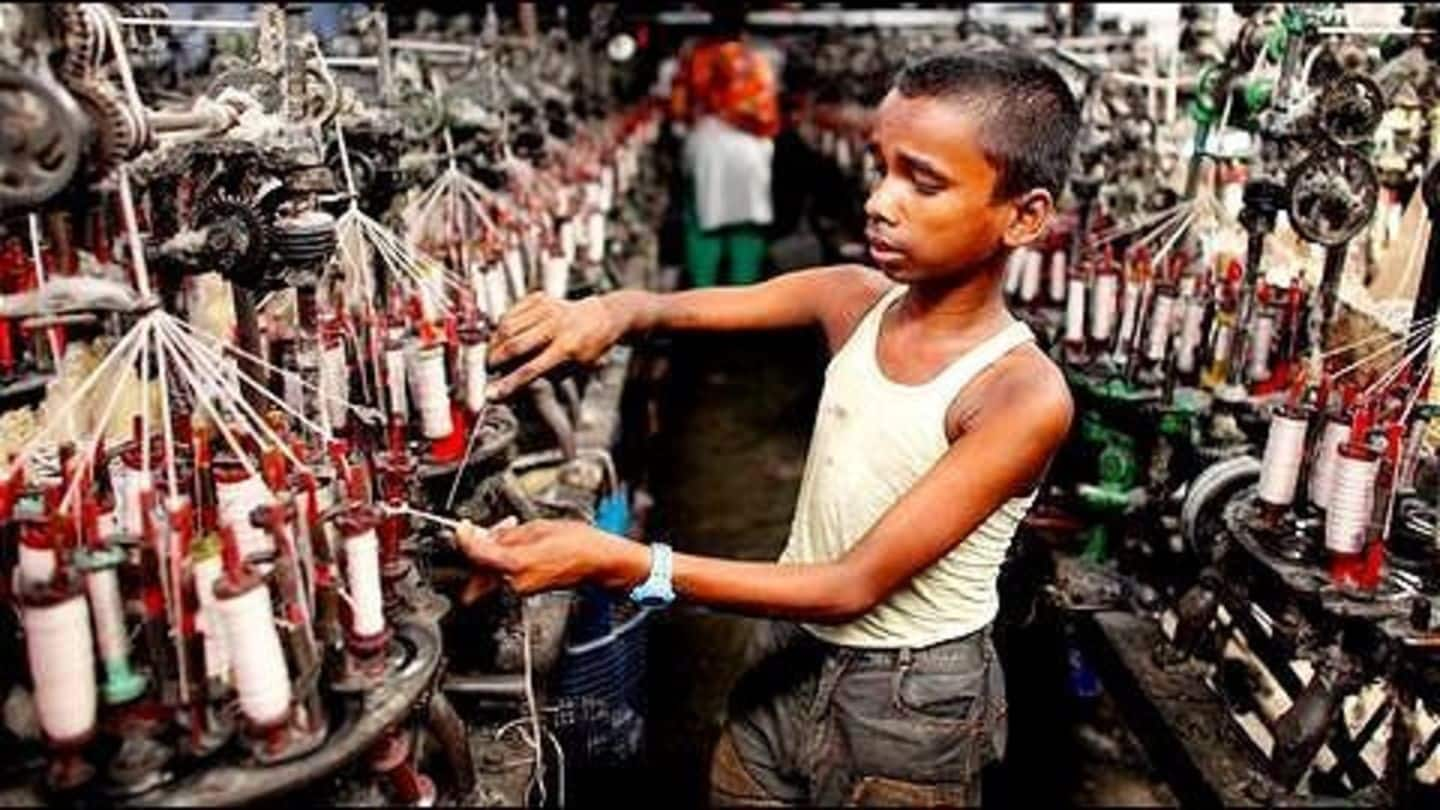
India has world's highest number of stunted children, child laborers
What's the story
India has the highest number of children stunted because of malnutrition (48.2 million) equivalent to Colombia's population, according to Save the Children's 'Stolen Childhoods' report. 31 million of children are part of India's workforce, the highest in the world. These two factors along with the lack of education and early marriage/parenthood pushed India to 116th place among 172 countries assessed for threats to childhood.
India's neighbors
Globally 700 million children had childhood curtailed early
Three of India's neighbors Sri Lanka (61st rank), Bhutan (93rd rank) and Myanmar (112th rank) fared better than India while Nepal (134), Bangladesh (134) and Pakistan (148) fared worse. The indicators used by the index include mortality among under-fives, malnutrition that stunts growth, lack of education, child labor, early marriage, adolescent births, displacement by conflict and child homicide.
Malnutrition
Highest number of stunted children in the world
Chronic malnutrition in the first 1,000 days of a child's life causes stunted growth. India has the highest stunting figures and one-third of the girls suffer from the condition. This leads to high mortality among under-fives, which is attributable to malnutrition. One in every 21 children dies even before turning five; for every 1,000 live births, 50 under-five deaths are registered.
Quote
India: Only one in ten children gets adequate nutrition
The report stated: "Chronic malnutrition at this stage of life is largely irreversible, and stunted children face a lifetime of lost opportunities in education and work. They are also more likely to succumb to illness and disease, and can die as a result."
Child Labor
31 million children effectively missing out on childhood
11.8% of Indian children in the 4-14 years age group or 31 million are working. Working children don't only miss out on education but also on rest, play, and recreation. They also miss opportunities to engage with their communities and participate in religious, cultural and sports activities. Half of all children living on streets or coming from homeless families work and don't study.
Quote
47mn youth of upper-secondary age not going to schools
18.6% children in primary and secondary age group and 47 million youth of upper-secondary age aren't in school. The report said, "The economic cost of not educating these out-of-school children is far greater than what it would cost to achieve universal primary education."
Details
Early marriage - A deprived childhood
21.1% of Indian girls are married between ages 15-19 while 103 million are married before age 18. Early marriage devastates a girl's life, forcing her into motherhood and adulthood even before she's physically and mentally ready. 23.3 girls per 1,000 give birth between ages 15-19. If girls became mothers in their 20s, it would have a greater economic productivity of Rs. 49,600cr or $7.7bn.
Quote
Child brides at risk
The report stated: "Child brides are at greater risk of experiencing dangerous complications in pregnancy and childbirth, contracting HIV/AIDS and suffering domestic violence. With little access to education and economic opportunities, they and their families are more likely to live in poverty."